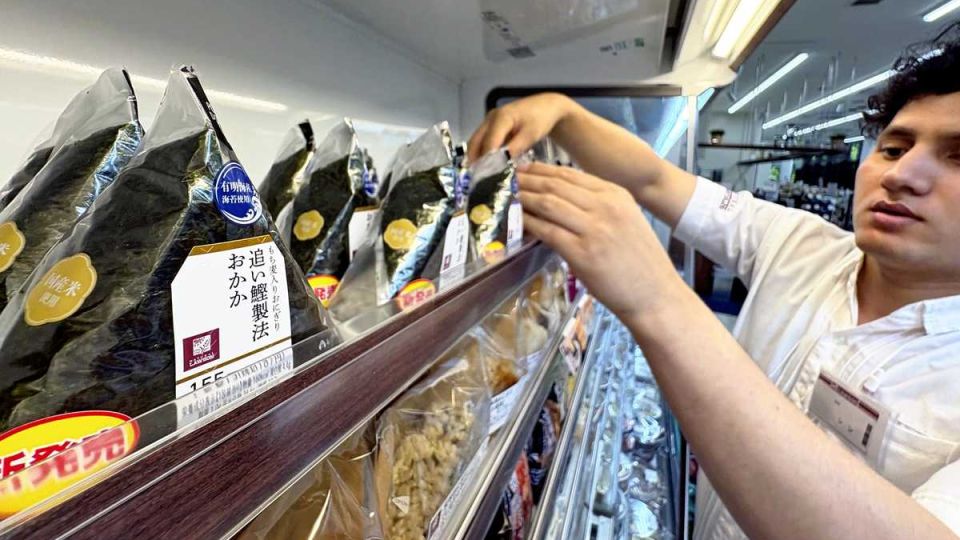May 8, 2025
TOKYO – Soaring rice prices and increased consumer frugality are driving changes in dining habits, including adding glutinous barley to rice and switching from rice to alternatives like bread and pasta.
There have also been moves to introduce foreign-grown rice, though it was unpopular at the time of the 1993 rice shortage.
Lawson Inc. introduced three new varieties onigiri rice balls using glutinous barley — okaka bonito flakes, salmon and tuna mayonnaise — at about 130 Natural Lawson stores in the Tokyo metropolitan area on April 23.
They maintained the price of the new rice balls, ranging from ¥167 to ¥203, by using glutinous barley to replace some of the white rice. Glutinous barley is also used along with rice in their bento box.
Glutinous barley takes up more space than rice. While two cups of rice are 300 grams, adding 100 grams of glutinous barley during cooking makes 3 cups.
With its high dietary fiber content, glutinous barley had already seen an increase in consumers eating it since it is mixed with rice, but soaring rice prices have drawn even greater attention to it.
Hakubaku Co., a manufacturer and seller of glutinous barley, reported their monthly year-on-year sales have increased for 11 consecutive months through March. They also increased production by beginning to operate their plant on Saturdays from April 12.
Sales volume changing
According to Mitsubishi Research Institute Inc.’s preliminary calculations, the price of a 150-gram serving of Koshihikari rice nearly doubled from ¥30 in April 2023 to ¥57 in February of this year. In contrast, a slice of bread from a 4-slice loaf rose by just ¥6 to ¥48.
Faced with expensive rice, many people are switching to alternatives. “I’ve switched to eating only bread for breakfast, and I have pasta for dinner once or twice a week,” said a 60-year-old taxi driver from Chiba Prefecture.
Supermarkets are also showing a clear trend toward rice alternatives. According to a February survey by research company True Data Inc., annual sales volume in grocery supermarkets rose by 24% for frozen pizza and gratin and 20% for macaroni compared to the previous year. Meanwhile, rice sales declined by 10%.
“Staple food products that serve as alternatives to rice are seeing increased demand,” according to the company’s analysis.
People are also re-evaluating foreign-grown rice.
In early March, major supermarket chain operator OK Corp. began selling five-kilogram bags of Calrose rice from California for ¥3,335 at its 10 outlets. Calrose rice less expensive than domestic varieties and has seen strong sales, leading the company to increase its availability to its 54 stores starting April 19.

